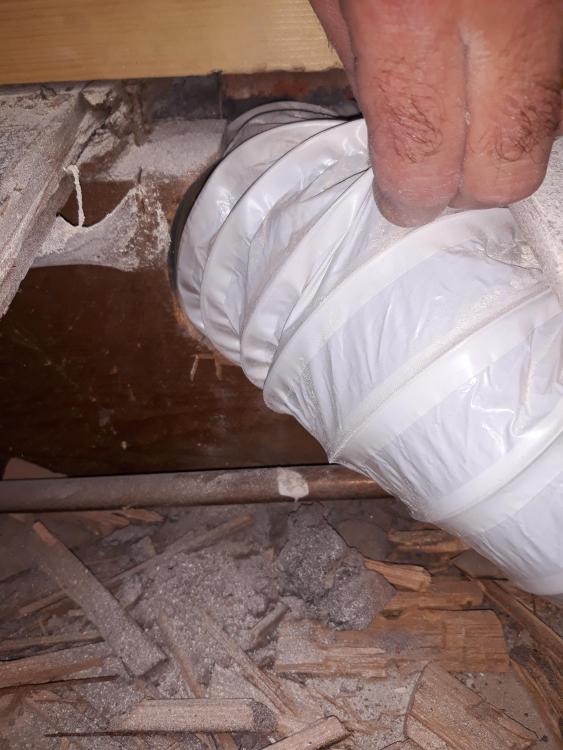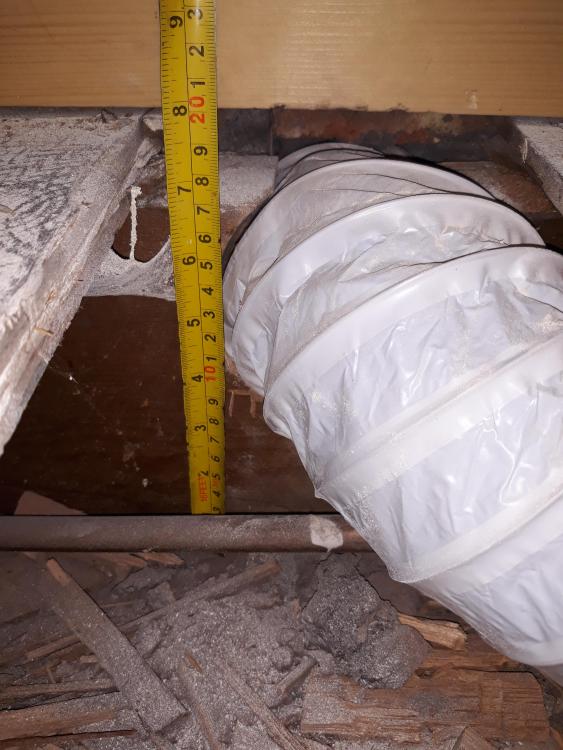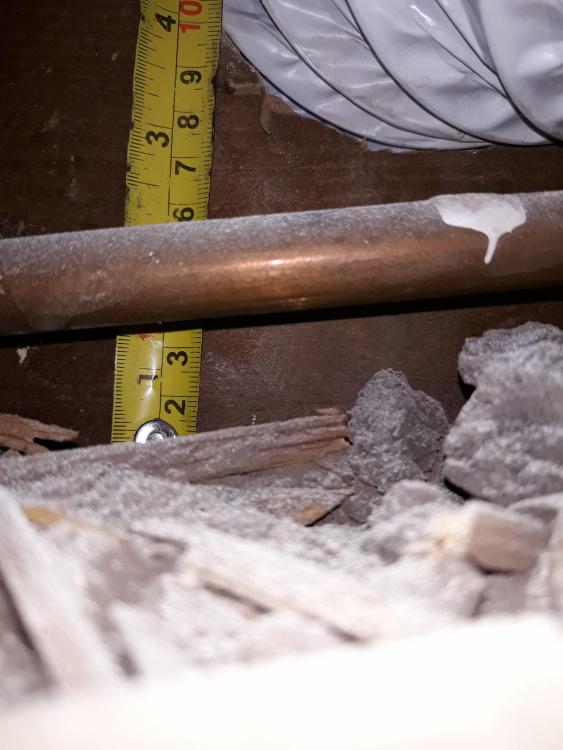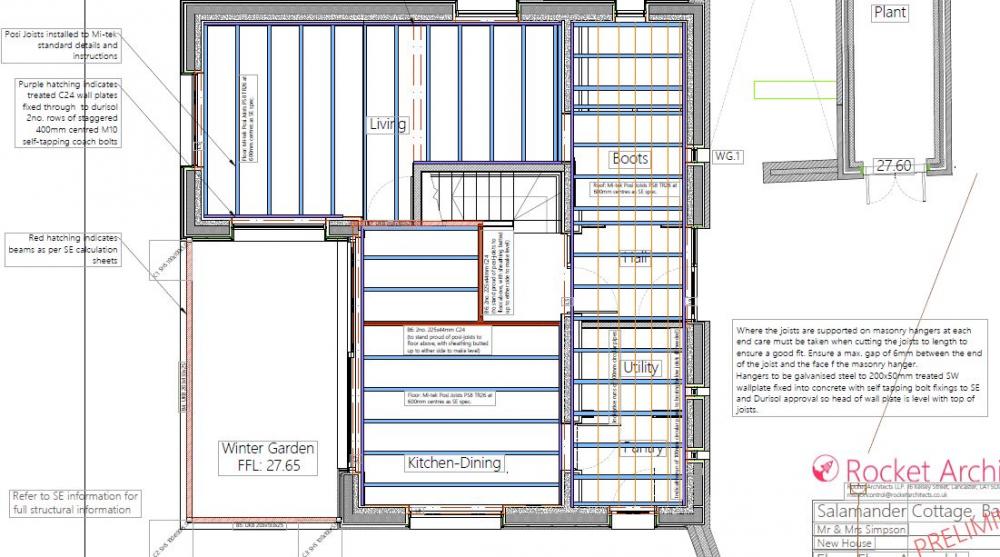Search the Community
Showing results for tags 'joist'.
-
At the risk of sounding like I know what I'm talking about, should I dwang my joists? All those in favour say 'Aye', all those against say 'Nay'. Where's he dug that up from then? Here This is the relevant passage. '... The slimmer JJI joists have been plated at their ends and dwanged (horizontal braces) to form a rigid structure. Two thicknesses of 12mm plywood will cover the ends, followed by the green vapour membrane being folded up over to give a vapour barrier. Insulation board of 140mm thickness will be fixed on top of that to bring it flush with the Durisol blocks below.... ( https://edinkist.wordpress.com/diary-of-the-build/)
- 18 replies
-
- air tightness
- airtight
-
(and 3 more)
Tagged with:
-
Hi all, Trying to figure out the best option for ufh in our new extention incorporating existing kitchen area etc. (I’ll attach the plans) I can’t figure out, A: is it best to clip onto foilbacked board in between joist and biscuit screed/cover with chipboard? B: lay routed panel boards and tile straight on top? I don’t really like the idea of tiling straight on top of the pipe as In “B” but will I feel the benefit and will we get enough heat from option “A”? the boiler is going into the utility, would like two zones, one for the main living space/kitchen and the other for the shower room. it’s a mine field, any help and guidance would be much appreciated. Also any other systems/options that would work? Best, Keith. GROUND FLOOR.pdf STRUCTURE 1.pdf
-
Hi, First time post and I would just be very grateful for some advice please. I have had an extractor fan fitted into the downstairs toilet conversion, which is located in the old cupboard beneath the stairs. The extractor flexible hose then runs up and beneath the floorboards on the landing and into the corner of one of the bedrooms before exiting the front of the house just above the garage. I initially requested that the contractor ran the hose adjacent to the joists and out of the side of the house as this would have meant that none of the joists would need to be disturbed in any way. However, I was shocked to see that the contractor has drilled out a large section of the joist to run the hose out above the garage at the front of the house. Please see the attached photographs. I believe that a depth of approximately 60% of the joist has been removed to make way for the hose. Now I am not a structural engineer but I am a very experienced DIY-er and I would never have attempted this as surely it would compromise the joist? As can be seen on the photographs, the joist is 7" in depth and a depth of approximately 4" has been removed. In my opinion its a shocking job. I have taken some photos of the adjacent joist to show the dimensions. My question is....is there any building control guidance/legislation on notching/drilling into joists and if so how would I obtain this? For me the job which has been undertaken cannot be compliant as the integrity of the joist is now surely compromised? And my other questions would be, do I need to get somebody competent to come out and look at this and if so what needs to be done to make the joist good again? Any advice would be greatly appreciated as I would like to challenge the contractor on the standard of works. Many thanks John
-
Joists are here and dropped in at 400mm centes I'm thinking skew nail the top chord to the wall plate but would welcome any suggestions. For the most they are 97 or 122mm wide, would top down screws give a better fix? Can't find anything specific in the layout drawing or manufacturer installation details.
- 6 replies
-
- posi joist
- joist
-
(and 1 more)
Tagged with:
-
I get that masonry wall floor joist hangers are favoured over traditional in-wall fixing of joists in the pursuit of airtight homes but can these hangers cope with 100 years of cyclical loading? Here is my beef. Driving a metal nail into a brittle masonry block to attach a hanger feels like an abuse of such dissimilar materials with long-term failure designed into the fixing. Next add 100 years of 80kg cyclical loading as humans walk around inside the home, stir in some thermal expansion and contraction loads on the hanger attachments and surely after a decade or two the hanger nails will start wobbling in the blocks? Then finally for a laugh apply that process to light thermal blocks. Are my concerns unfounded? The no nonsense commercial builder of a plot nearby has fitted his metal web floor joists direct into the inner blockwork and these blocks are heavy structural blocks I think.
- 20 replies
-
- joist hangers
- metal joist hanger
- (and 6 more)
-
I think I have got my head round the principles of putting the first floor in its place (is that a pun?). I have read the relevant guidance (The POSI Joist Handbook) - and see architects note top left below. I have also read the architects note (bottom -right) which shows me I need to use 200 by 50 treated softwood. Here's our first floor And here's how Durisol recommend I attach the wall plate to the wall So far so good. POSI say I must use a hanger (and the architect says so too) because of air-tightness, and that means I need to..... make sure the fixing for the hanger doesn't penetrate the wall (and so compromise air-tightness) or put air-tightness tape over the masonry hanger fixing. Hanger - to wall-plate: I have a strong feeling I can't get away with 50mm screws for the connection between the hanger and the wall plate can I? What size will those screws need to be? Wall-Plate to wall: Self tapping M10 coach bolts at 400mm centers (architects note above) to attach the wall-plate to the wall? The key thing is that they connect with the concrete isn't it, even if the 400 mm centers guidance happens to fall outside the concrete core (i.e. into the 'wood' of the Durisol block? I think I'll probably need to embed the wall-plate fixing in resin won't I - for air-tightness?
- 50 replies
-
Just got some prices for POSIs: there are two prices; one for treated joists, and the other for -errrm- untreated joists. First: why do you need to treat joists? They can't misbehave, or be rude, and so Is it worth it? The price difference is £100+ for quite a few The architects notes specify treatment for the wall plate for the joists, but doesn't mention treatment for the joists themselves.








